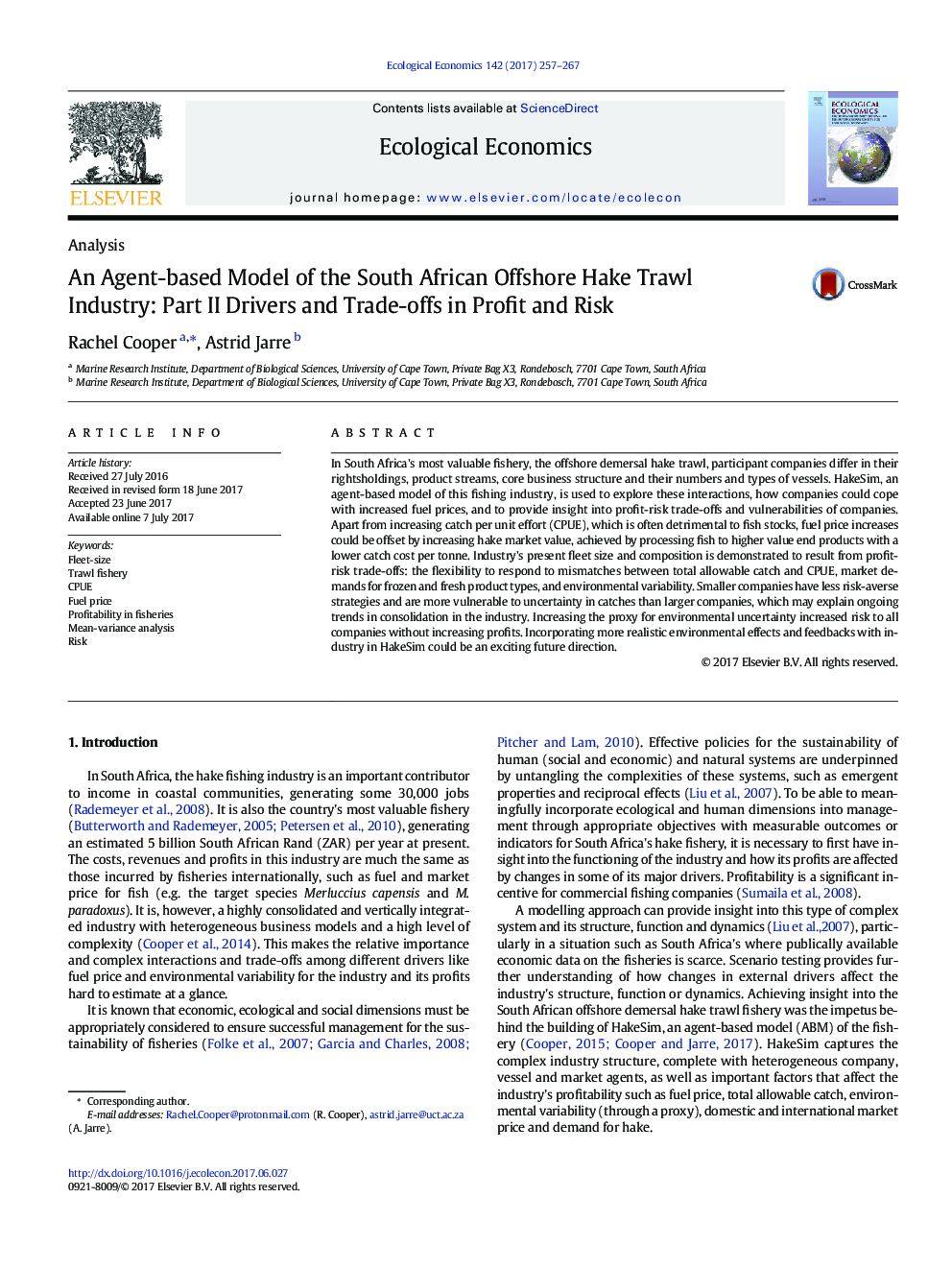| Article ID | Journal | Published Year | Pages | File Type |
|---|---|---|---|---|
| 5048550 | Ecological Economics | 2017 | 11 Pages |
â¢Novel agent-based model assesses importance of drivers & profit-risk tradeoff strategies.â¢Increasing value of hake products can offset increased fuel costs.â¢Industry fleet size may reduce losses & help catch quota under CPUE-TAC mismatches.â¢Small companies are less risk-averse and more vulnerable to uncertainty in catches.â¢Increased environmental uncertainty proxy increased financial risk to all companies.
In South Africa's most valuable fishery, the offshore demersal hake trawl, participant companies differ in their rightsholdings, product streams, core business structure and their numbers and types of vessels. HakeSim, an agent-based model of this fishing industry, is used to explore these interactions, how companies could cope with increased fuel prices, and to provide insight into profit-risk trade-offs and vulnerabilities of companies. Apart from increasing catch per unit effort (CPUE), which is often detrimental to fish stocks, fuel price increases could be offset by increasing hake market value, achieved by processing fish to higher value end products with a lower catch cost per tonne. Industry's present fleet size and composition is demonstrated to result from profit-risk trade-offs: the flexibility to respond to mismatches between total allowable catch and CPUE, market demands for frozen and fresh product types, and environmental variability. Smaller companies have less risk-averse strategies and are more vulnerable to uncertainty in catches than larger companies, which may explain ongoing trends in consolidation in the industry. Increasing the proxy for environmental uncertainty increased risk to all companies without increasing profits. Incorporating more realistic environmental effects and feedbacks with industry in HakeSim could be an exciting future direction.
